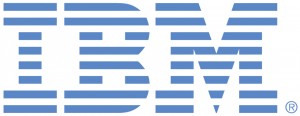Carnegie Mellon University in Pittsburgh is dedicated to higher education, research, and learning, so it makes sense that the buildings themselves are smart. By partnering with IBM, Carnegie Mellon was able to harness the power of data from buildings to improve facility performance, increase efficiency, and advance industry business practices.
The Center of Digital Education recently hosted a webinar, “Making the Case for Building Analytics: Results from Carnegie Mellon University.” Moderated by Otto Benavides, Senior Fellow at the Center, the webinar brought together Joe Phillips, Director of IBM Building Industry Solutions, and Dr. Donald Coffelt, Associate Vice President and Director of the Facilities Management Services Division at Carnegie Mellon University. The hour-long discussion focused on what facilities management means and how an institution can benefit from it.
What is smart building management? According to Phillips, it’s the application of analytics to existing building machinery, systems, processes to optimize performance and team efficiency. There are three primary outcomes for building analytics: performance, efficiency, and advancement.
- Performance: Phillips noted that a better-tuned machine provides better outcomes, improving building performance. In the context of Carnegie Mellon, they asked how their facilities can enhance teaching, learning, innovating, and connecting.
- Efficiency: Improving building management and allocation of resources will result in a more efficient system, allowing organizations to recoup their investments. A question to ask here is how facility management processes can improve through the use of data and analytics.
- Advancement: By improving building systems, organizations can advance the building industry overall as well as improve their own mission achievement. Organizations can ask how the building industry can improve by adopting and harnessing big data analytics.
One of the most touted benefits of building analytics is energy conversation. Building analytics can add value to traditional energy conservation methods and creates new value not possible by those traditional means. Older methods of energy conservation focuses on upgrading and retuning equipment, but these strategies are slow to respond to change, resulting in a loss of savings. Building analytics helps improve energy conservation in three ways.
- Persistence: By constantly evaluating the building system, management teams can upgrade and retune equipment more regularly, eliminating the typical loss of savings.
- New performance trends: Building analytics also provides new metrics to monitor for better understanding of the building.
- New learning and insights: As building managers adapt to the analytics available to them, they will become capable of achieving greater performance and efficiency with their tools.
Carnegie Mellon provides a useful case study for these benefits in action.
Carnegie Mellon’s Pittsburgh campus spans 150 acres, 6 million square feet, and serves 18,000 people. In addition, there is a wide array of building ages and system maturity, so any analytics program needs to flexible and adaptable. Before settling on a program, Dr. Coffelt went through three steps: due diligence, constituency building and risk mitigation.
- Due diligence: Coffelt conducted thorough research on the benefits of building analytics and visited other locations that implemented IBM’s building analytics solution.
- Constituency building: Coffelt looked outside of his team to build wide-ranging support for the pilot program. He found allies in the university’s research community who wanted to use the building data to conduct new projects.
- Risk mitigation: Coffelt worked with Phillips to integrate risk mitigation techniques into the final agreement between the university and IBM
The pilot program spanned 11 buildings and approximately 1 million square feet and involved 4 building automation systems and 67 pieces of equipment. The pilot found 33 individual faults in the affected air handling units, including some that likely would not have been found through other means. In just four months of operations, the program reduced annual energy costs by $137 thousand and the savings will continue to grow over time. Dr. Coffelt estimated that the analytics system would be applicable for 80% of campus buildings, and he and his team plan to expand the pilot into a campus-wide project. By 2020, this is expected to create a 5% reduction in thermal energy costs per year and 3% annual savings in avoided maintenance and operations costs.
IBM has helped Carnegie Mellon achieve more than just energy savings. Building analytics will also help Carnegie Mellon achieve their mission by creating a better, more efficient space for research and education. For even more information on building analytics, Carnegie Mellon’s program, and tips to take to your organization, check out the full webinar here.






Leave a Reply
You must be logged in to post a comment.